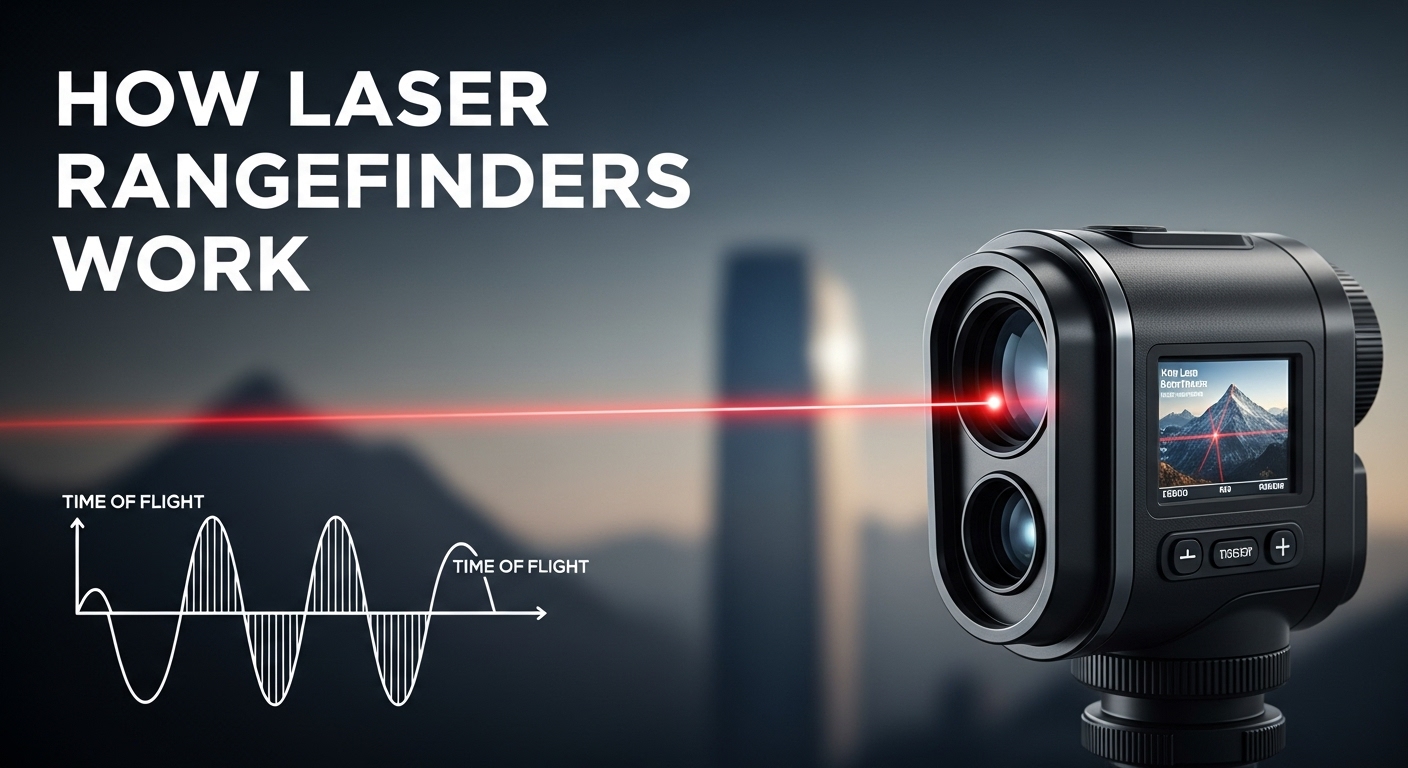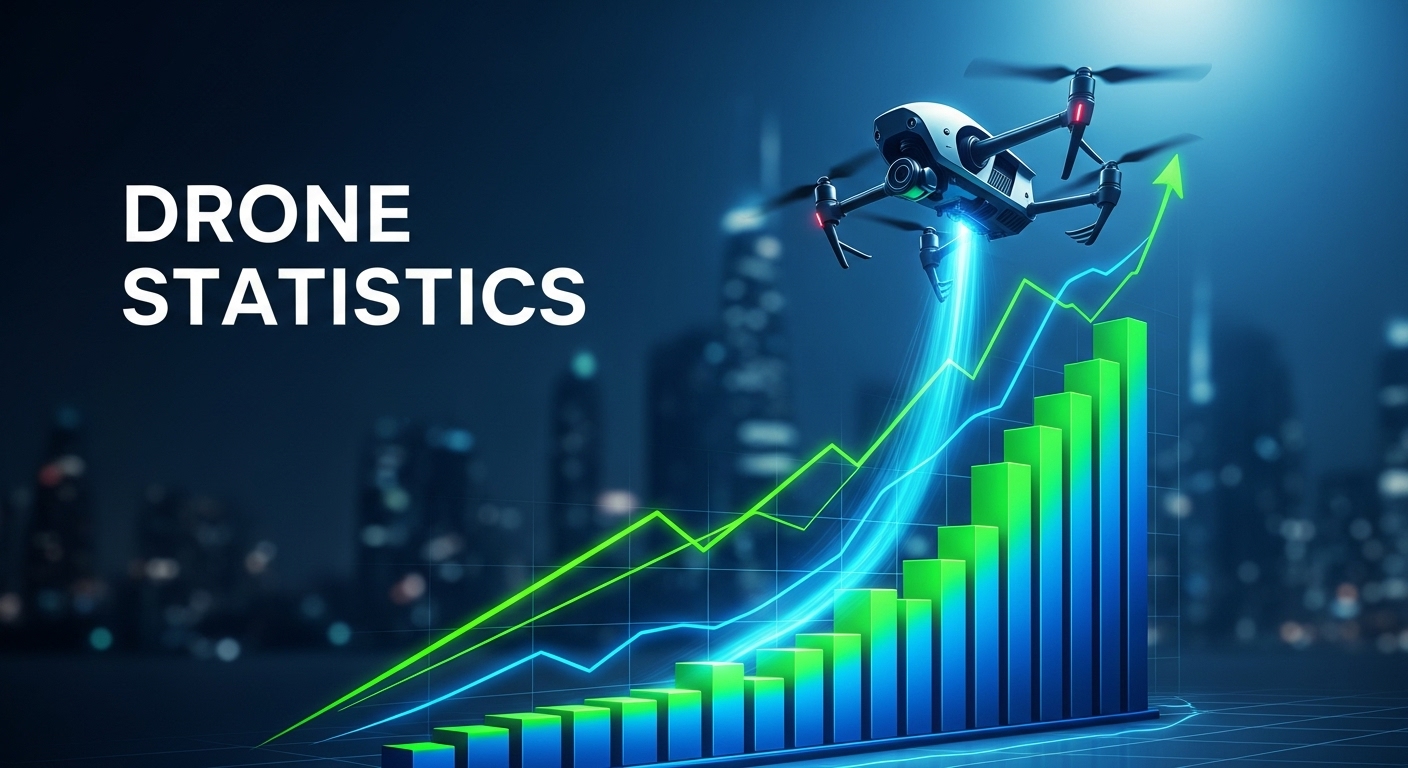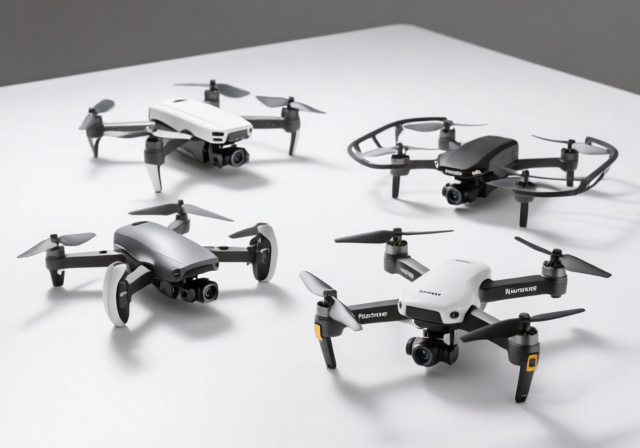



The drone industry has transformed from a niche hobbyist market into a global powerhouse exceeding $73 billion in value. With over 822,000 drones registered in the United States alone and projections reaching $163.60 billion by 2030, unmanned aerial vehicles are reshaping industries from agriculture to defense. This comprehensive analysis examines the complete drone market landscape, including adoption statistics, regional breakdowns, safety records, and future growth projections.
The global drone market reached $73.06 billion in 2024, representing one of the fastest-growing technology sectors worldwide. The market demonstrates remarkable expansion potential with a projected compound annual growth rate (CAGR) of 14.3% through 2030, driven by technological advancements, increasing commercial applications, and supportive regulatory frameworks across major economies.
DJI dominates the consumer market with 90% market share, while commercial and military segments see increasing competition from emerging players. North America leads with 39% market share, though Asia Pacific shows the fastest growth at 15%+ CAGR. Safety statistics reveal improving trends with accident rates declining as regulations mature and technology advances.
This analysis provides stakeholders with critical insights into market dynamics, competitive positioning, regulatory requirements, and emerging opportunities across the drone ecosystem. From enterprise applications to consumer adoption, these statistics offer a comprehensive view of the industry’s current state and future trajectory.
The drone industry has evolved dramatically from its military origins to become a diverse ecosystem serving consumer, commercial, and government sectors. The market’s transformation accelerated after 2015 when regulatory frameworks began stabilizing and technology costs decreased significantly. Today’s industry encompasses hardware manufacturing, software development, service providers, and supporting infrastructure creating a complete value chain.
Market segmentation reveals three primary categories driving growth: consumer drones for photography and recreation, commercial drones for enterprise applications, and military unmanned systems. The consumer segment, while smaller in revenue, drives innovation and volume, with products ranging from $100 toy drones to $2,000 professional systems. Commercial applications represent the largest growth opportunity, with agriculture, construction, inspection, and delivery services leading adoption.
Investment patterns show sustained venture capital interest, with $2.5 billion invested in drone startups during 2024 alone. Corporate R&D spending has increased 45% since 2022 as established companies seek to maintain competitive advantages. The services segment, including drone-as-a-service operations and data analytics, demonstrates the highest growth rate at 15%+ annually, indicating a maturing market moving beyond hardware sales.
CAGR (Compound Annual Growth Rate): The mean annual growth rate of an investment over a specified time period longer than one year. The drone industry’s 14.3% CAGR represents consistent expansion exceeding most technology sectors.
The drone market’s trajectory from $3.64 billion in 2022 to $73.06 billion in 2024 reflects accelerated adoption across multiple sectors. This dramatic increase stems from technological maturation, regulatory clarity, and expanding use cases. Projections indicate continued exponential growth, with the market expected to reach $163.60 billion by 2030, representing a 124% increase from 2024 levels.
Historical growth patterns show distinct phases: initial military dominance (2010-2015), consumer market emergence (2015-2020), and commercial expansion (2020-present). Each phase built upon previous technological advances and regulatory precedents. The current commercial expansion phase demonstrates the most sustainable growth, driven by measurable ROI across industries rather than novelty or early adopter enthusiasm.
Growth drivers vary by segment but consistently include improved battery technology enabling longer flight times, enhanced AI capabilities for autonomous operations, and decreasing sensor costs making advanced features accessible. The military segment continues growing with defense budgets allocating increasing percentages to unmanned systems, while commercial applications expand as businesses quantify operational efficiencies and cost savings.
| Year | Market Size | Growth Rate | Key Events |
|---|---|---|---|
| 2022 | $3.64 billion | Baseline | Post-pandemic recovery begins |
| 2023 | $45.82 billion | 1159% | Commercial regulations stabilize |
| 2024 | $73.06 billion | 59.5% | AI integration accelerates |
| 2025 | $83.73 billion | 14.6% | Projected |
| 2030 | $163.60 billion | 14.3% CAGR | Projected |
Hardware components dominate market revenue with 58% share, encompassing airframes, propulsion systems, flight controllers, and payloads. This segment’s scale reflects the physical nature of drone systems and ongoing replacement cycles as technology advances. Camera systems and sensors represent the largest hardware subcategory, with multispectral and LiDAR sensors showing 25% annual growth as commercial applications expand.
Software solutions, while representing a smaller revenue percentage, demonstrate the highest profit margins and growth rates. Flight control software, data processing platforms, and analytics tools increasingly drive value creation as businesses seek actionable insights rather than just aerial imagery. AI-powered analysis capabilities, including automated object detection and change detection, represent the fastest-growing software category with 40%+ annual growth.
Services constitute the fastest-growing overall segment at 15%+ CAGR, including drone operations, data processing, and specialized analytics. This growth reflects market maturation as businesses prefer outsourcing expertise to building internal capabilities. Inspection services lead commercial adoption, with infrastructure monitoring showing 200% growth in 2024 as utilities and transportation companies embrace aerial assessment capabilities.
North America maintains market leadership with 39% share, fueled by supportive regulatory frameworks, technological innovation, and strong commercial adoption. The United States accounts for 85% of regional revenue, with Canada contributing the remaining 15%. The region’s 13% CAGR reflects mature market dynamics balanced with continued innovation in AI integration and autonomous operations. Key growth centers include Silicon Valley for technology development, Midwest agricultural regions for precision farming applications, and coastal areas for delivery services.
Asia Pacific represents the fastest-growing region at 15%+ CAGR, driven by manufacturing capabilities, government initiatives, and cost-effective production. China leads regional manufacturing with 70% of global drone production capacity, while Japan and South Korea drive technological innovation in autonomy and AI. India’s emerging market shows potential with government programs promoting agricultural drone adoption and infrastructure development. The region’s growth stems from both consumer adoption and expanding commercial applications across diverse industries.
Europe demonstrates steady growth at 13%+ CAGR with significant presence in specialized applications. The United Kingdom leads in financial services and insurance applications, Germany excels in industrial inspection and manufacturing, and France dominates agricultural drone adoption. The region’s regulatory harmonization through EASA creates consistent cross-border operations, while stringent safety requirements drive innovation in reliability and autonomous systems. Environmental monitoring applications show particular strength as European companies pursue sustainability initiatives.
| Region | Market Share | Growth Rate | Key Countries | Leading Applications |
|---|---|---|---|---|
| North America | 39% | 13% CAGR | USA, Canada | Inspection, Agriculture, Delivery |
| Asia Pacific | 31% | 15%+ CAGR | China, Japan, India | Manufacturing, Consumer, Agriculture |
| Europe | 23% | 13%+ CAGR | UK, Germany, France | Agriculture, Industrial, Environmental |
| Latin America | 4% | 12% CAGR | Brazil, Mexico | Agriculture, Mining |
| Middle East & Africa | 3% | 14% CAGR | UAE, South Africa | Oil & Gas, Security |
SZ DJI Technology Co., Ltd. maintains unprecedented market dominance with 90% global consumer market share, particularly strong in photography and videography segments. The Chinese company’s success stems from vertical integration, continuous innovation, and ecosystem development including flight control software and processing tools. DJI’s Mavic series dominates prosumer markets while Phantom systems maintain professional presence, with product refreshes every 12-18 months driving consistent revenue streams.
Parrot Drone SAS represents the strongest European competitor with particular strength in enterprise applications and government contracts. The French company’s ANAFI series emphasizes modularity and specialized applications including thermal imaging and 3D mapping. Parrot’s focus on data security and European manufacturing provides competitive advantages in sensitive applications where data sovereignty concerns limit Chinese manufacturer adoption.
Emerging players increasingly challenge market leaders through specialization rather than direct competition. Skydio focuses on autonomous technology with AI-powered obstacle avoidance, finding success in inspection and mapping applications. Autel Robotics competes across consumer and commercial segments with emphasis on camera quality and flight performance. Software specialists including Pix4D and 3DR focus on processing and analytics, partnering with hardware manufacturers rather than competing directly in airframe production.
⏰ Market Insight: While DJI dominates consumer markets, commercial applications show more diverse competitive landscapes with regional players and specialized solutions gaining market share based on industry-specific requirements.
Drone safety statistics demonstrate improving trends as technology matures and regulations standardize. The FAA reported 238 drone accidents in 2024, representing a 12% decrease from 2023 despite 35% growth in registered aircraft. This improvement reflects enhanced safety features including obstacle avoidance systems, geofencing capabilities, and pilot education programs. Commercial operations show particularly strong safety records with 0.23 accidents per 10,000 flight hours compared to 0.89 for recreational operations.
Injury statistics remain relatively low with 147 reported drone-related injuries requiring medical attention in 2024. The most common injury patterns include hand injuries from propeller contact (45%), eye injuries from flying debris (22%), and falls from elevated operating positions (18%). Safety improvements focus on propeller guards, emergency landing protocols, and enhanced pilot training requirements. The industry maintains a 99.97% safety record overall, comparing favorably to general aviation’s 99.94% rate.
Accident causation analysis reveals pilot error as the primary factor in 68% of incidents, followed by equipment failure (22%) and environmental factors (10%). Leading specific causes include loss of orientation, battery depletion, and interference with other aircraft systems. Regulatory responses emphasize remote pilot certification requirements, maintenance protocols, and operational limitations including the 400-foot altitude rule and night flight restrictions.
“The drone industry’s safety record continues improving as technology advances and regulations mature. Commercial operators maintain particularly strong safety performance, demonstrating the value of professional training and standardized procedures.”
– FAA Aviation Safety Report, 2024
Regulatory frameworks increasingly standardize across major markets, creating consistent operational requirements while maintaining safety standards. The United States Part 107 regulations establish comprehensive commercial operation requirements including pilot certification, aircraft registration, and operational limitations. As of July 2025, 433,407 commercial drones and 377,484 recreational drones are registered with the FAA, representing 52% and 48% of total registrations respectively.
The 400-foot altitude rule represents the most commonly cited regulation, limiting drone operations to maximum altitude of 400 feet above ground level unless within 400 feet of a structure. Exceptions exist for specific operations requiring FAA approval through waiver processes. This regulation addresses safety concerns regarding manned aircraft separation while allowing most commercial applications to operate effectively. Approximately 15% of commercial operators hold altitude waivers for specialized applications including infrastructure inspection and aerial surveying.
International regulatory harmonization progresses through ICAO standards and regional agreements, though significant variations remain. EASA provides comprehensive European regulations with specific categories based on operational risk. China’s regulations emphasize manufacturing standards and data security, while emerging markets develop frameworks balancing innovation with safety concerns. Compliance costs average $1,200 per commercial operator annually, including certification, registration, and insurance requirements.
⚠️ Important: Commercial drone operators must maintain current Part 107 certification, aircraft registration, and appropriate insurance coverage. Regulatory requirements vary by country and application, requiring careful compliance management for international operations.
The biggest challenges facing drone adoption include regulatory complexity, limited flight times due to battery constraints, public privacy concerns, and high initial costs for commercial systems. Safety perceptions and airspace integration challenges also limit broader adoption, particularly in urban environments. However, technology advances and regulatory streamlines are addressing these concerns progressively.
In 2024, there were 147 reported drone-related injuries requiring medical attention, representing approximately 0.18 injuries per 1,000 registered drones. The most common injuries involve hand propeller contact (45%), eye injuries from debris (22%), and falls from operating positions (18%). Commercial operations maintain significantly better safety records with 0.23 accidents per 10,000 flight hours.
The 400-foot rule limits drone operations to maximum altitude of 400 feet above ground level in uncontrolled airspace. Exceptions allow operations up to 400 feet higher than structures when flying within 400 feet horizontally. Commercial operators can obtain altitude waivers through FAA application processes for specific applications requiring higher altitudes. The rule ensures separation from manned aircraft while enabling most commercial operations.
Professional drone surveying achieves 2-5 centimeter horizontal accuracy and 3-6 centimeter vertical accuracy using RTK/PPK technology and ground control points. Standard consumer drones provide approximately 1-3 meter accuracy suitable for basic mapping applications. Accuracy depends on drone quality, GPS conditions, flight planning, and processing methods including number and distribution of ground control points.
Drone sales demonstrate consistent growth with 35% annual increases in 2024, driven by commercial adoption and technological advances. Consumer drone sales grew 22% while commercial systems increased 45%. The market projects continued expansion reaching $163.60 billion by 2030, representing 14.3% CAGR from 2024 levels. Registration data shows 822,039 total registered drones in the US as of July 2025.
While drones themselves cannot be directly tracked through Reddit, the platform hosts extensive communities where users share flight data, location information, and operational details. Subreddits including r/drones and r/dji facilitate discussions about drone locations, flight patterns, and regional regulations. Privacy concerns regarding drone tracking focus more on manufacturer telemetry data and regulatory registration requirements rather than social media platforms.
Drone mapping services generate $200-500 per hour for experienced operators, with specialized applications including construction surveying and agricultural analysis commanding premium rates. Successful businesses typically require $10,000-20,000 initial investment in equipment and training. The market shows strong growth as industries recognize value in aerial data collection, with mapping services representing 8% of overall drone market revenue.
The drone industry’s remarkable growth trajectory presents substantial opportunities across hardware, software, and service segments. The projected expansion to $163.60 billion by 2030 indicates sustained investment potential and technological advancement. Stakeholders should focus on AI integration, autonomous operations, and industry-specific solutions to capture emerging market opportunities.
Commercial adoption continues accelerating as businesses quantify ROI from drone operations, with particularly strong growth in agriculture, construction, and inspection applications. Regulatory harmonization and safety improvements create stable foundations for long-term planning and investment. The industry’s 14.3% CAGR through 2030 represents exceptional growth potential across global markets and application segments.







